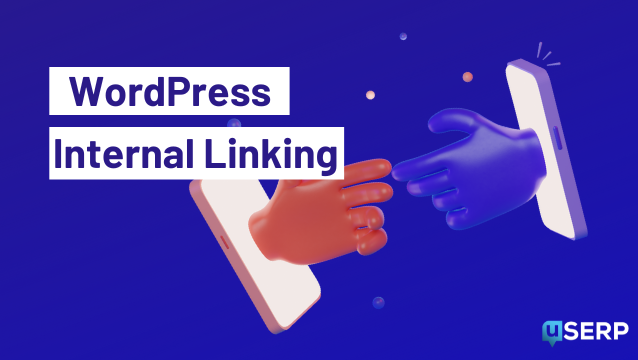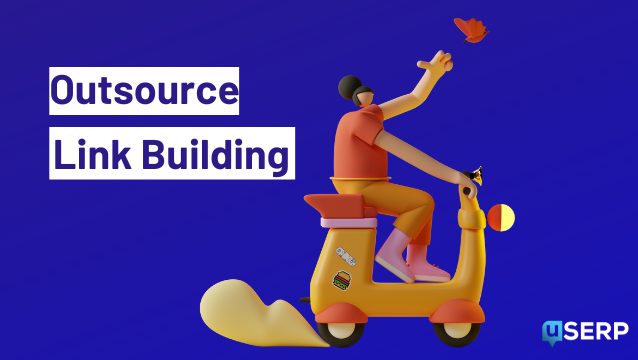SEO for startups is a rarely discussed sector of digital marketing. SEO, or search engine optimization, is a powerful channel that most startups fail to leverage.
In fact, 50% of venture capital raised for startups goes straight into ads rather than building organic traffic.
The problem? People hate ads.
The other problem? 68% of online experiences begin with an organic search. That means most people head to Google to look things up. And only 6% of those searches result in clicks to ads.
The other 94% goes to organic results.
If you aren’t ranking for those organic searches, you’re missing out on the majority of opportunities to convert potential customers and grow your startup.
In this guide we’ll teach you how to grow your tech startup and get customers through search engine optimization, content marketing, and even local SEO.
Start Here: What Search Engines are Looking For
Before we dive into the exact steps you can take to optimize and create an SEO strategy for your startup, you should understand what search engines are looking for.
While there are many ranking factors, much of SEO can be broken into a few specific buckets and SEO tips:
- Content: pages on your website that answer search queries. For example, if you run a fitness app startup, you would want to create content around what your target audience might be searching. Examples could include “how to do a jumping jack” or “fitness plans for senior adults.” Then, you’d want to optimize that content for readability, engagement, and topical authority / depth (more on this later). In simple words: create content that people are searching for that helps them!
- Backlinks: Backlinks, or inbound links, are links from an external site pointing back to your site. For example, if CNN links to your website, that is a backlink. These are extremely valuable signals to search engines that your content is reputable. They are critical for ranking well. In simple words: backlinks are like reviews in the eye of Google. The more you have from good sources, the better you’ll rank.
- Technical SEO: Making sure your website is technically sound; it’s fast and loads within three seconds on mobile, the usability is good on both desktop and mobile, and the content is easy to find and consume. In simple words: make your website speedy and organize the information well with proper menus.
While there are many other factors and we can go further in-depth, these serve as a base-level understanding of quality pages on the web.
Now, here are the exact steps to take to drive organic traffic from your target audience.
Step 1. Improve website speed and usability
The first step before creating any content or trying to do any link building is to ensure your website is fast and that usability is good.
If your website is slow, people will click off your page and look for a faster answer. This signals negatively to search engines and can impact rankings.
In addition, if your website has poor usability like hard to navigate menus or doesn’t scale to mobile device screen sizes, you again will see negative impacts to rankings.
As a benchmark, your website should load in three seconds or less on any given device from mobile to desktop to tablet.
You can test your current page speed using Google’s PageSpeed Insight tool.
To optimize usability, ensure that your desktop site features clear menus while implementing collapsible menus on your mobile site. Incorporating Interface Mockups seamlessly into your design can further enhance the user experience. You can test the usability of your website and the effectiveness of your menu navigation using UXtweak.
Once you’ve nailed these, you can start creating content that will drive organic traffic to a blog post, a landing page, and your site in general.
Step 2. Identify types content to create based on buying journey
Content (based on keyword research) is key to acquiring customers through eCommerce SEO.
You can’t have just a homepage, about page, and pricing page, and expect to drive 50,000 qualified buyers to your website every month.
People need to discover your website through various keyword searches at multiple stages of their buying journey.
For instance, if you’re a fintech startup that helps people invest in their children, you want to show up first for people searching “investing in children.”
Here is a break-down of how this might work, and how you can do proper keyword research:
- Awareness: “how to get customers with SEO”
- Interest: “uSERP link building guide”
- Consideration: “best link building services”
- Conversion: “uSERP pricing”
Your goal is identifying keywords in each stage and creating unique types of content based on the intent of that stage.
For example, the intent of someone in the awareness stage is not to buy from you yet.
So trying to sell them is only going to hurt your chances at acquiring a customer.
Conversely, someone looking in the consideration stage wants more details on your brand, your features, your product.
When it comes to startup SEO, your goal is multi-dimensional.
- Create content that builds your brand awareness
- Create content that results in direct conversions and signups to your software or services
So, how does one get started? How do you find these keywords? Where do you do keyword research?
First, start by using common identifiers and modifier words that typically fall in each bucket from Awareness to Conversion.
- Awareness: what, how, who, where, tutorial, guide, learn, examples, resource
- For example: How to do XYZ, ultimate guide to at home fitness, 10 examples of great XYZ.
- Interest: brand name, name of product or service + awareness modifier
- For example: [your brand] guide to XYZ
- Consideration: best, top, review, vs, comparison
- For example: [your brand] vs competitor, Top XX [ecommerce] brands
- Conversion: pricing, discount, coupon, buy, get
- For example: [your brand] pricing
These phrase modifiers help you identify the intent behind content.
Your aim is to create content that falls into these categories for your startup, targeting long tail keywords (like: the best ways to create XYZ).
As a rule of thumb for best results, try to create and publish 5-10 high-quality pieces of content across these stages each and every month.
While there is no “magic” number, we’ve helped hundreds of companies scale organically and this is a great starting point to build topical authority in your niche.
Step 3. On-page SEO
Now that you have publish-ready content for a target keyword, you’ll want to tackle on-page factors to improve your seo content.
What is on-page optimization for SEO? Basically you are optimizing factors of your title, meta description (the description of a page you see in search results), images, and more.
While on-page optimization does not directly improve your rankings, it delivers a better user experience. And that improved user experience means people stay longer, convert more often, and more.
Without further ado, here are the factors you’ll need to apply as you publish your content.
URL string
Include your keyword in your URL for best practices. For example, if you are writing a post on “seo myths” your URL should be:
Title Tag
Your title tag should also contain your keyword, preferably as close to the start of your title as possible. For example, our title tag is the entire string below, but our keyword “seo myths” appears close to the beginning:
Use Keyword in First Paragraph
In the first paragraph / intro of your content piece, try to naturally use the exact keyword you are targeting. Don’t stuff the keyword multiple times. Just use it naturally! This not only helps contextualize content to search engines but reassures readers the content they clicked on is what they expected it to be.
Add Image Alt Tags
Image alt tags help search engines understand what your image contains. Without them, your images aren’t crawled nor understood by search engines.
Use simple descriptions and do not stuff keywords in your alt tags:
Internal Links
Internal links are simply links from your website pointing to other pages on your website.
The best practice here is to link to multiple relevant pages wherever possible on your site.
If you publish a blog post, link to 2-3 other blog posts on your site where they make sense in the content. Take this roofer salary guide as an example. In the guide, you’ll see internal links to Jobber’s roofing invoice template, how-to content, and software product pages.
Use an Optimization Tool
Lastly, we always recommend using an optimization tool like MarketMuse or Clearscope. These tools can help improve the quality, depth, intent, and relevancy of your content to a given keyword:
They are very easy to use and provide key suggestions to maximize the impact of your content.
Lastly, Publish!
Now that you’ve made it this far, publish your content!
We recommend using a tool like Wordable to automate this, as the process is tedious and time-consuming to upload content to your website’s CMS.
Now that you’ve published, it’s time to distribute that content and earn backlinks to improve your rankings.
Here’s how:
Step 4. Link building and digital PR
Inbound links, or backlinks, are links pointing from an external website back to your website:
Link building is an essential component of ranking well organically. Links are a signal to Google from other websites that your content is trustworthy and helpful to readers.
You want links pointing to your website from high quality sources.
For example, as a startup, getting a mention from Crunchbase’s blog would be a big win.
Why?
Crunchbase is:
- Hyper-relevant to the startup scene
- Their website is very high authority (big brand, lots of content + links, has been around for a long time)
When you acquire links from sources like this, that authority is passed to you.
So, how do you acquire links that move the needle and improve organic rankings?
Here are a few key strategies you can implement. The same ones my team implements for startups like monday.com, ActiveCampaign, Hotjar, and hundreds more.
Target Listicles First
Listicles are pieces of content typically in the consideration stage that list off multiple options for users to explore. They are a great place to start for a startup’s SEO strategy.
For example, like this post we published on the top free link building tools:
People are searching for this content to understand the landscape of options at their disposal.
In terms of time to results, acquiring these mentions is the fastest way to increase traffic and sales.
Let’s say your startup is an AI copywriting tool. Where might you start?
By Googling variations like “top writing tools” or “best ai writing tools.”
There are far more variations you can search for, and each of these will net dozens of pieces of content ranking and discussing the best tools in that space:
These are huge opportunities for a startup business to drive faster results in SEO.
What do I mean by faster? Well, if you conduct outreach to these site owners and pitch your startup to get added to the list, you can drive immediate referral traffic from these to meet your SEO goals.
Since these pieces of content are already ranking well, getting listed at a top tool on their list will bring in both a backlink and referral traffic.
We’ve done this at uSERP, getting listed on key comparison content. It drives thousands of visits to our website every month, many of which become qualified leads for our services.
Compile a list of these articles in a spreadsheet going up to the third page of Google results for each query.
Meaning for each variation of “best writing tools” you search, you should have a list of 30 posts.
Repeat this now for other variations of that search. Go deep. Think bigger: “best writing tools for teachers.”
There are nearly endless variations and tweaks to keywords here.
Now you should have a list of hundreds of pieces of content that you can realistically be added to.
Use a tool like Hunter or VoilaNorbert to find email addresses of the site owners in your search.
Now, load up a tool like Mailshake or Reply to start sending out cold campaigns.
Provide value first. What can you offer them? Free lifetime access to your tool?
Offer that in exchange for being mentioned on their list.
Repeat this process over and over and over until you’ve acquired dozens of high-quality mentions and links.
You should see referral traffic begin to accumulate each month, and your own website and brand authority will grow too.
Guest posting and contributing columns
Guest posting, or having a contributing column, means that you are submitting content to an external site with the hopes of being published on that site.
In return, you typically get to link back to your own website content:
Ideally, these are recurring contributing columns and not one-off guest posts.
As you can imagine, these are powerful for both direct backlink acquisition and brand awareness.
Writing for high-profile, trusted publications is a great way to build your brand organically.
To find sites in your niche, you have multiple options:
- Google lists like “best startup blogs” and other variations
- Use a tool like Crunchbase to generate a list of blogs in your niche
Whatever you do, please don’t search for “guest post sites.” These are almost always spammy and they get so many outreach emails daily that your success rate will be close to zero.
Focus on building relationships with website owners in your niche.
Deliver them high quality content ideas and they are bound to say yes.
Be prepared to write long-form content (2,000 words or more) and deliver it quickly to them.
If you don’t have the operational capacity to scale links, book a call with us at uSERP.
Digital PR for Startup SEO
Digital PR is a longer-term investment that takes more planning than typical link building activities.
Digital PR involves developing story angles and ideas that major journalists will want to cover.
The beauty of digital PR initiatives is that they can generate major results if done correctly.
Here’s a single digital PR study we conducted at uSERP, that generated 1.17k backlinks from 126 unique websites:
It also helped us build relationships with big companies in our industry and can be directly tied to revenue increases.
Digital PR can come in many forms, and it’s all about the angle and story that you craft. You are pitching journalists here, so you can’t be self-serving. You have to share content that people care about, not a disguised sales pitch that everyone can see through.
A few great examples of digital PR are:
- Studies (like ours above on link building)
- Yearly reports (like HubSpot does)
- Interviews
- Founder stories
- Funding stories
- New company initiatives around things people care about (cases, charity, dramatic shifts in work-life balance, like Bolt:)
PR can come in many forms. The most repeatable method is creating valuable original data and studies that people want to talk about.
Brainstorm what your audience cares about and what unique data you can survey for.
Conclusion
SEO for startups isn’t complex, but it’s not easy. When done right, SEO for a startup business can massively improve search ranking, customer acquisition, and profitability.
It requires plenty of effort and content creation, but it can produce customers for years to come without spending more to acquire every single customer.
Invest in your SEO as soon as possible, or consider outsourcing to an agency for SaaS SEO. The longer you wait the more difficult it becomes to rank, and the longer it takes to see results.
Start by getting familiar with what search engines seek to achieve. Identify types of content your potential customers are already searching for. Create, optimize, and distribute that content to improve your rankings.
And finally, build your brand in search engines with targeted PR and link building efforts.
In just a few months you can start ranking for real searches, driving real traffic, and real customers.
- The State of Backlinks for SEO in 2024: What 800+ SEOs Think About Link Building - January 10, 2024
- Why You Should Accept External Contributors for Your Blog: 7 Benefits of Collaborative Content - October 18, 2023
- 10 WordPress Image Optimization Plugins for a Faster Website - January 25, 2023








